Interview with Jean-Christophe Paré by Marina Nordera
Descrizione
Dancer and dance educator JEAN-CHRISTOPHE PARÉ and dance historian MARINA NORDERA discuss about the Baroque Dance, a genre that Paré encountered in the 80s during an era of political and cultural significance for France that saw the recognition and support by the French state not only of the “nouvelle danse française” but also of the “danse baroque”.
Engaged in exploring unknown paths during his career, his way of dealing with memory is a very peculiar one; as he claims, “I love to know that I lose memory”.
Going deeper into the specificities of the interpretation of different roles that marked his career, such as those of L’entrée d’Apollon by Guillaume-Louis Pécour and L’entrée du Sommeil in Lully’s Atys, Paré describes how his relationship with baroque dance was developed from being an established dancer at the Paris Opera to transitioning to an independent dance artist.
After years of research and practice close to Francine Lancelot, today he approaches baroque dance as a creative form of expression that may vibrate in the present through sensorial flow and a kinesthetic organisation of movement.
Referring to educational settings, he approaches baroque dance, and more generally all forms of theatrical dance, through the lens of interdisciplinarity, thus not as an isolated module to study separately from other practices but rather as a way to explore broader themes pertinent to contemporary choreographic composition.
He sees in baroque dance the potential to become a space of synthesis where past and present may form a connected whole.
QUESTIONS D'ENTRETIEN:
[00:00:19] Quel est ton premier souvenir de danse?
[00:04:03] Comment s’est construit ton rapport avec la danse tout le long de ta carrière?
[00:07:58] Est-ce que tu te souviens de ce que tu as ressenti lors de ta première rencontre avec la danse baroque ?
[00:14:02] Comment ta formation en danse classique, moderne, post-moderne et contemporaine a-t-elle influencé ton interprétation de l'Entrée d'Apollon de Guillaume-Louis Pecour?
[00:22:01] Comment as-tu vécu l’expérience de l’interprétation de l’Entrée du Sommeil dans Atys?
[00:24:44] Est-ce que tu as eu l’occasion de transmettre l’Entrée du Sommeil à d’autres danseurs?
[00:29:13] Est-ce que ton rapport à l’interprétation de la danse baroque a changé dans le temps?
[00:32:33] Pourrais-tu parler de ton travail récent avec le danseur et chorégraphe Jean-Christophe Boclé sur l’expérience de la mémoire en danse?
[00:36:36] Quelle mémoire as-tu du début des années 1980 en France, période charnière où ont émergé au même temps la “danse baroque” et la “nouvelle danse française”?
[00:41:29] Est-ce que les danses dites “anciennes” faisaient partie de la formation à l’école de l’Opéra de Paris?
[00:43:19] Quelle était ta vision de la danse baroque dans les années 1980, et quelle est-elle aujourd’hui?
[00:47:44] Pourrais-tu parler de ton expérience artistique avec Wilfride Piollet et Jean Guizerix?
[00:56:14] Pourrais-tu définir la notion de style?
[01:00:57] Quand tu transmets une pièce, comment tu t’y prends pour inclure ce que tu appelles “la vibration stylistique dans la transmission de l’unité motrice”?
[01:07:14] As-tu développé des mnémotechniques tout au long de ta carrière d’interprète?
[01:09:06] Est-ce que tu portes en toi la mémoire de pièces que tu as dansé dans les années 1970-80?
[01:12:50] Est-ce que tu as toujours pris des notes sur le processus de création?
[01:15:58] Est-ce que quand tu étais danseur à l’Opéra de Paris l’institution prenait en charge la conservation de la mémoire, alors qu’en tant que danseur autonome tu as dû trouver tes propres moyens pour conserver la mémoire?
[01:19:39] Quelle est la place de la danse baroque dans les structures d’enseignement dans lesquelles tu as été impliqué à différents titres?
Luogo/Tempo
Centre National de la Danse, Pantin, France
13 luglio 2022
Formato
video/quicktime (995.91 MB PT1H24M56S)
Soggetto
• Atys ; Entrée d’Apollon ; Eventail (III) ; Points in Space ; Boclé, Jean-Christophe ; Carlson, Carolyn ; Childs, Lucinda ; Christie, William ; Cunningham, Merce ; Degroat, Andy ; Dunn, Douglas ; Guizerix, Jean ; Lancelot, Francine ; Larrieu, Daniel ; Massin, Béatrice ; Piollet, Wilfride ; Raffinot, François ; Conservatoire national supérieur de musique et de danse de Paris ; Ecole supérieure de danse de Marseille ; French Ministry of Culture ; Paris Opera ; baroque dance ; interdisciplinarity ; interpretation (performance) ; kinesthesia ; movement phrasing ; sensoriality ; sensorial flow (sensorial organisation of movement) ; suspension ; stylistic vibration ; versatility
Lingua:
FranceseDiritti:
© Tutti i diritti riservatiAll materials are owned by Ca’ Foscari University of Venice, project Mnemedance. Any use of the material different from consultation is not possible without the prior written consent of Mnemedance’s supervisor. Interviews may only be reproduced with permission by Mnemedance.







 è un servizio del
è un servizio del